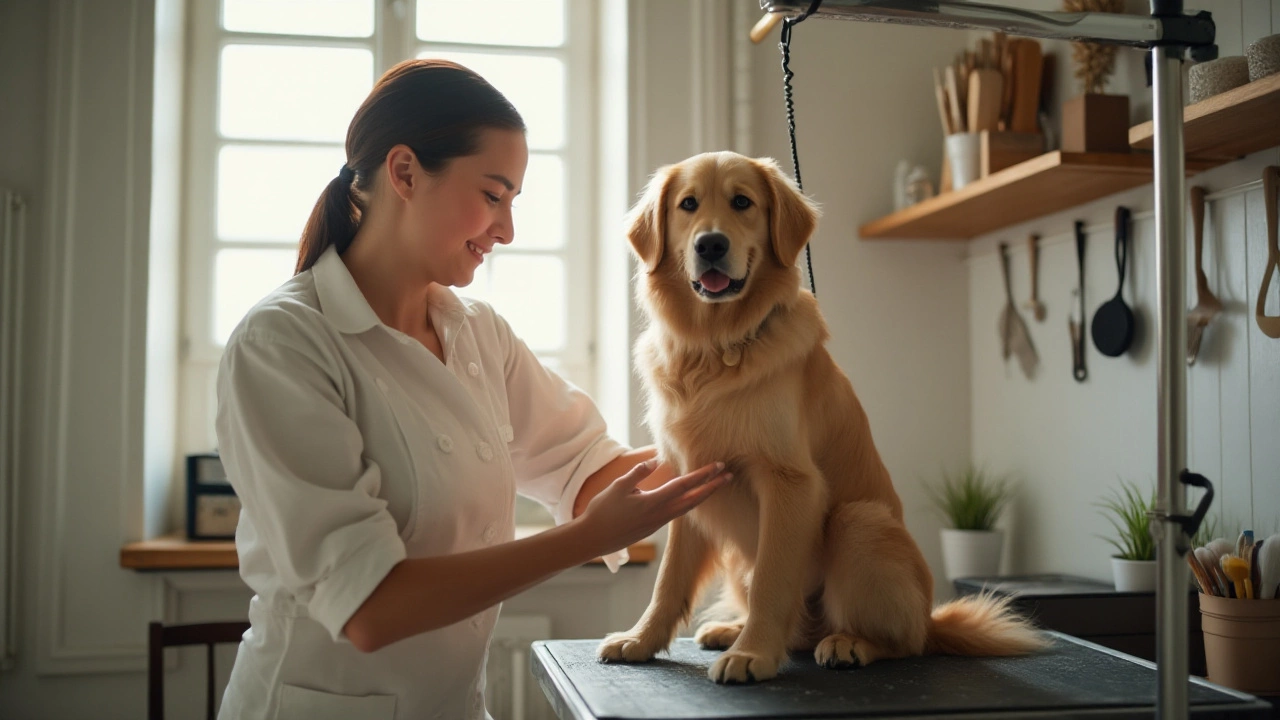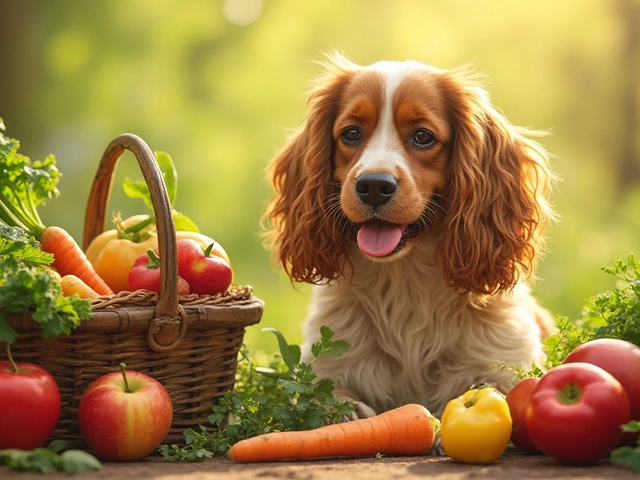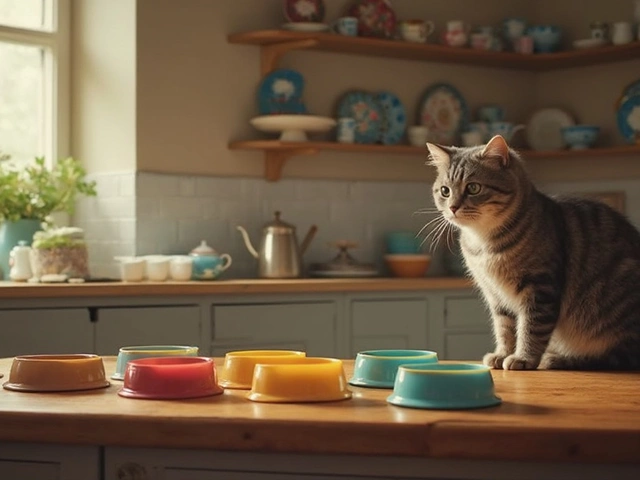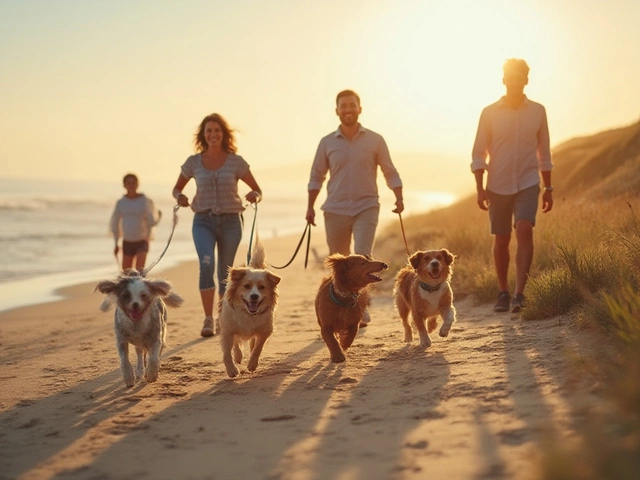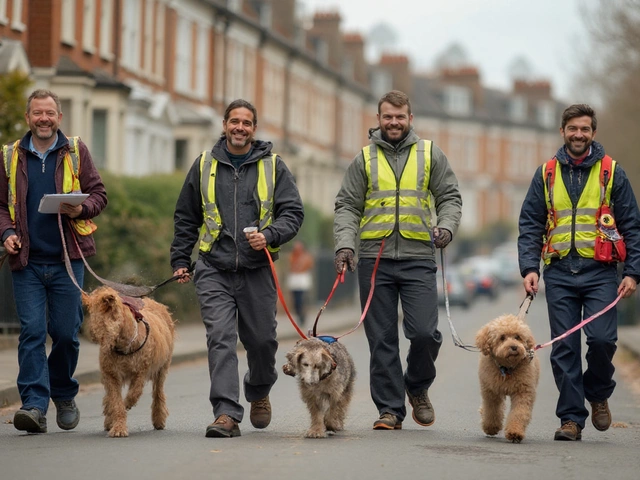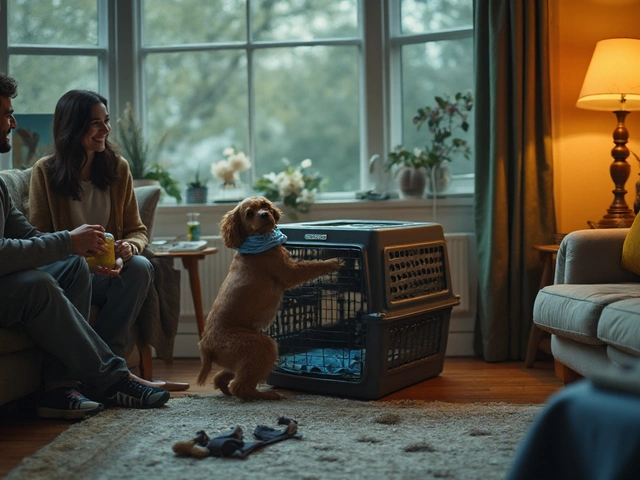Dog grooming isn't just a regular chore; it's an art that requires patience, skill, and a keen understanding of canine behavior. When a dog walks into a grooming salon, it's not just the scissors or shampoo that play a crucial role. The way groomers manage and restrain dogs can make a world of difference in how the grooming session unfolds.
It's a balance of gentle handling, using the right tools, and understanding the unique needs of each dog. Professional groomers have mastered various techniques to ensure that dogs remain calm and cooperative throughout their grooming experience. While restraint might sound intimidating, it's all about ensuring safety and comfort for our furry friends and the hardworking groomers. In this article, we'll delve into these strategies, explore why they are necessary, and offer tips to ensure the grooming process is smooth for everyone involved.
- Understanding Canine Behavior
- The Importance of Restraint in Grooming
- Common Restraint Tools Used by Groomers
- Technique and Skill in Dog Restraint
- Creating a Stress-Free Environment
- Safety Tips for At-Home Grooming
Understanding Canine Behavior
Dogs, like humans, have their unique behavioral patterns and instincts that stem from their ancestry. Recognizing these intrinsic traits is vital when it comes to dog grooming and ensuring a smooth experience. At their core, dogs are social animals that communicate through body language, sounds, and even scents. This array of communication channels provides cues that groomers can learn to read to tailor their approach accordingly. Understanding these signals allows groomers to predict how a dog might react to various grooming tasks. For instance, a dog that stiffens or turns away may be telling the groomer it feels uneasy. On the other hand, a wagging tail and relaxed posture are positive signs of comfort and cooperation.
Often, breed characteristics play a significant role in a dog's disposition during grooming. Greyhounds, for example, might exhibit aloofness, while Golden Retrievers are usually more at ease and social. A groomer's ability to identify personality traits specific to dog breeds can make their job less daunting. It's equally important to consider the individual dog's past experiences. Dr. Sophia Yin, a renowned veterinarian and behaviorist, explained in her book ‘Low Stress Handling, Restraint and Behavior Modification of Dogs and Cats’ that "Understanding the context in which behaviors emerge is key to managing pets effectively." Her insights remind groomers that a dog's prior grooming or veterinary experiences can dramatically affect their current tolerance levels.
Emotion plays a pivotal role in a dog's behavior during grooming. Dogs don't just react; they remember. If a prior experience was stressful, they might associate similar environments or tools with that stress. This reaction is where groomers tap into techniques that emphasize positive reinforcement and patience. A dog that is gradually acclimated to the grooming environment typically shows enhanced compliance and less anxiety. Patience becomes essential, especially when working with puppies or dogs experiencing grooming for the first time. A slow introduction to tools, mixed with treats and calm speech, usually works wonders. For a lot of dogs, the smells in the salon evoke a blend of curiosity and apprehension. These familiar scents can trigger memories, making their approach in grooming quite unpredictable, but manageable with the right knowledge.
Crucially, the social environment of a grooming salon influences canines immensely. Dogs are experts at picking up on human emotions. A tense or anxious handler might inadvertently transfer these feelings to the dog, heightening its alertness and stress. Thus, professional groomers remain calm and collected, often talking to dogs in soothing tones, ensuring their body language doesn't signal alarm. Experienced groomers also understand the importance of establishing trust. This trust isn't built overnight but through consistency and care. Regular grooming sessions can reinforce positive associations with grooming tools and settings, leading to a more cooperative pooch over time. Knowledge of canine behavior can be a powerful tool in the art of dog grooming, crafting an environment where both the pet and groomer feel secure and connected.
The Importance of Restraint in Grooming
Grooming a dog isn't just about keeping a pet's coat shiny and mats-free; it involves ensuring the safety of both the animal and the groomer. The reality is that not all dogs are comfortable being handled, especially in an unfamiliar environment filled with new sounds and smells. This is where the art of restraint comes into play, and it's an essential component in the world of dog grooming. Restraint, when done correctly, is not about force or intimidation. Instead, it's about creating an environment in which the dog feels safe and confident enough to withstand the grooming process without undue stress or risk of injury. Understanding why restraint is important can also help pet owners replicate some of these methods at home, making grooming a better experience for their pets.
Proper restraint ensures that a dog remains still enough for a groomer to do their job effectively, which involves the meticulous shaving, trimming, and nail clipping each dog breed requires. An unexpected movement can lead to accidents, like a painful cut or a nick. Groomers often use their experience to read a dog's body language, which helps them decide what level and type of restraint is needed. There are situations where a simple hand placed confidently on a pup's shoulder might suffice, while other times more secure options such as grooming loops or harnesses are necessary.
"Using the right technique can often mean the difference between a soothing experience and a stressful ordeal," shares Susan Hargrove, a well-known pet behaviorist. "It's all about understanding the animal's body language and taking preemptive measures to ensure a calm environment."Creating a stress-free environment doesn’t mean suppressing a dog’s behavior entirely; rather, it's about providing them relief and assurance throughout the grooming procedure.
While restraint is necessary, it's equally crucial to do it humanely. Restraints are not meant to punish a dog or make them uncomfortable. A big part of why restraint matters is due to how laboratory studies have shown that dogs, much like humans, are very sensitive to touch, which impacts their behavior significantly. They respond positively to gentle, firm contact, making the skill of knowing how much pressure to apply at any given moment vital for a groomer. High-stress levels in dogs can lead to longer-term implications like anxiety or aversion to grooming altogether.
Another compelling point favoring restraint is the way it can streamline the grooming process. Knowing that disruptions are minimized encourages efficiency, allowing groomers to maintain schedules and deliver the quality service their clients expect. As much as it reassures the dog, it also instills confidence in the groomer. In professional settings, this isn’t just a convenience but an essential part of providing reliable, safe pet care services to hundreds of animals.
For pet owners eager to reduce their dog's stress during grooming, starting with simple conditioning at home can be beneficial. By introducing basic restraints in a familiar environment, backed by treats and praises, dogs begin to associate the process with positive experiences. It could be as uncomplicated as teaching them to stand still on command or accepting handling of their paws or ears, laying down the groundwork for better behavior during professional grooming sessions.
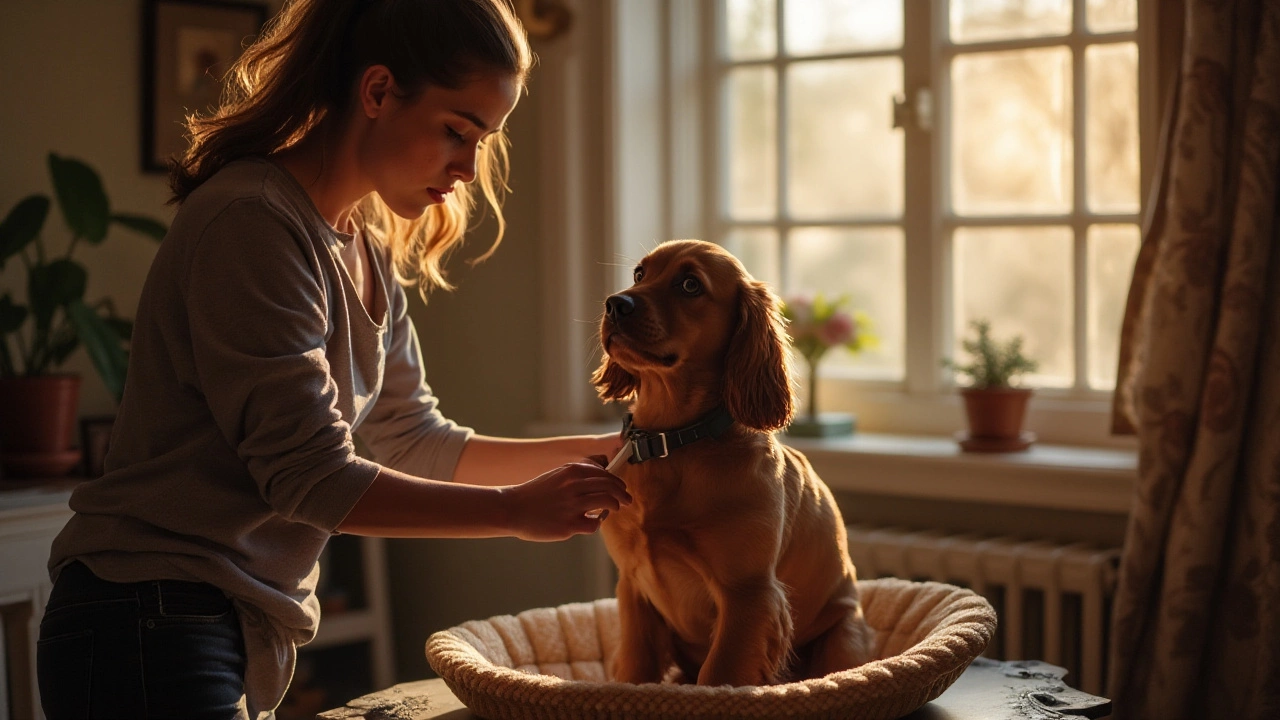
Common Restraint Tools Used by Groomers
When you enter a grooming salon, you might notice an array of tools, each serving a specific function, and some may even include restraint tools designed to safely manage our canine companions. These tools are essential in keeping both the dog grooming process efficient and the dogs calm. One popular tool is the grooming arm and noose—a sophisticated setup attached to grooming tables. The arm has an adjustable strap known as a noose that secures around a dog’s neck or shoulders, providing stability. But it's not as intimidating as it sounds; rather, it's a gentle way to ensure that dogs don’t unexpectedly leap off, risking injury.
Groomers often rely on slip leads, flexible, loop-like leashes, to guide dogs during bath time or when moving around the grooming area. Their main advantage is their simplicity and ease of use, keeping dogs on the move without causing discomfort. Then, there's the QuietTime cage—it’s not just an ordinary pet kennel. QuietTime cages are designed to provide a safe haven for dogs that need a bit of downtime amid the bustling noise of the salon. These tools collectively create an environment where dogs feel secure, making groomers’ work much more manageable.
For certain breeds with more unique or challenging needs, grooming muzzles can be effective. Although some might view them with skepticism, muzzles are tools of safety rather than suppression. They prevent nervous dogs from nipping or biting yet allow them to breathe, pant, and drink easily. As Arlene Fawcett, a renowned pet behaviorist once said,
"A muzzle should be seen as a seatbelt for grooming. It provides restraint without compromising the pet's comfort."This insight assures pet owners that such tools prioritize dogs’ wellbeing.
Beyond these, many groomers turn to anti-slip mats or pads on grooming tables. These handy materials prevent dogs’ paws from slipping, especially when wet. The extra grip ensures pets feel more stable and less stressed during grooming routines. Not to forget, the emergence of specialized dog bathtubs with built-in tethers has revolutionized washing sessions in pet care. These bathtubs come fitted with hooks or loops, allowing groomers to attach the dog’s collar, ensuring they remain in one place while enjoying a scrub-down.
Statistics show that about 90% of dog owners have observed improved behavior in their pets post consistent visits to professional groomers. Here, supervision plays a pivotal role. These tools assist groomers in maintaining order and safety, equipping them to handle even the most boisterous dogs with expertise. Martha Jones, the co-owner of Canine Couture Grooming said, "The right tools help maintain a positive grooming experience, reducing stress for both the pet and groomer."
Overall, these thoughtfully chosen tools significantly enhance the grooming experience. While they form only a fragment of the grooming arsenal, their impact is undeniable, ensuring each grooming session runs smoothly and safely, leaving dogs not just looking their best but feeling relaxed and happy too.
Technique and Skill in Dog Restraint
Restraint in the dog grooming world is far from being a matter of force; instead, it's about technique and understanding, which evolves over time with practice and patience. Each dog is a unique individual, with its own personality quirks, anxieties, and preferences. A skilled groomer knows this and approaches each four-legged client with a blend of keen observation and adaptability. One of the fundamental aspects of restraining a dog during grooming is to ensure the animal feels secure rather than trapped, which significantly reduces its stress levels and resistance. This can be as simple as using a gentle touch or softly spoken word to soothe the animal.
Groomers often employ a variety of tools designed for safe restraint. These tools may include loops and harnesses that are strategically placed around the neck or body, providing enough restraint to keep the dog from jumping or moving too much, but not so restrictive as to cause discomfort. Such gear is crafted from materials that are both durable and comfortable. Another technique involves distraction, which plays a crucial role. A treat or a toy strategically offered can make a notable difference, turning what could be a source of anxiety into a positive experience.
Training and experience contribute significantly to the skill set of a professional groomer. Many groomers undergo specialty courses where they learn not just the mechanics of grooming but also the delicate art of dog handling. In some grooming societies, such as the National Dog Groomers Association of America, restraint and handling techniques are essential parts of the curriculum. This education places emphasis on recognizing the signs of canine discomfort and knowing just when to step back or calm a dog with soothing tones or gentle touches.
An often-discussed topic among professionals is the sensitive balance of applying restraint without crossing into undue force or causing trauma, both physical and psychological.
"The best restraint is invisible. It's about creating an environment of trust and comfort where the dog naturally stays put," says renowned dog behaviorist Dr. Jane Goodall.This highlights how true expertise involves an almost imperceptible application of restraint, guided by intuition as much as by learned skill.
In practical terms, groomers sum up effective restraint in three main strategies: physical tools and tactics, building a rapport with the dog, and utilizing the art of distraction. Experts agree that by integrating these approaches, the grooming experience is made smoother for both the pet and the professional. Therefore, the restraint becomes less of a procedure to be feared, and more of an art that facilitates a calm and productive grooming session.
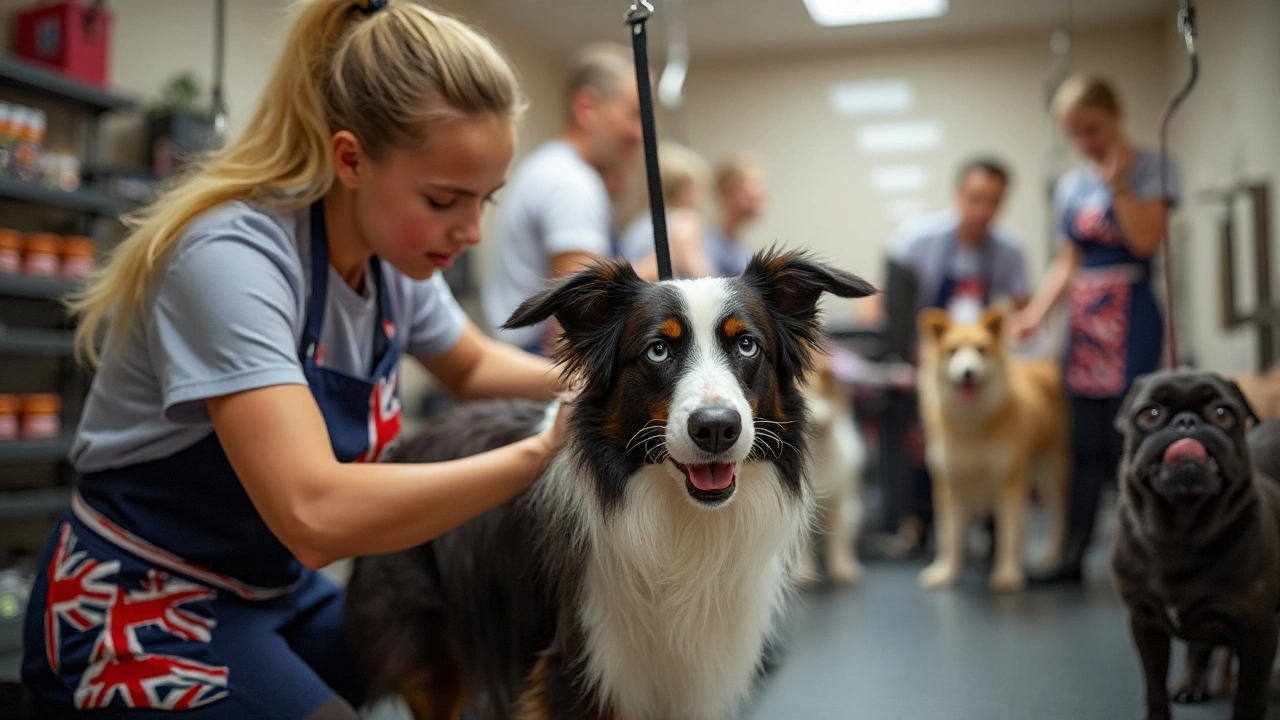
Creating a Stress-Free Environment
Creating a stress-free environment is crucial for both the dog and the groomer. Dogs are incredibly sensitive to the emotions and environment around them, and can pick up on stress and anxiety faster than we might realize. The first step to minimizing this stress is by ensuring the grooming salon is a calm and inviting space. This can be achieved by using soft, soothing colors on the walls, playing gentle music at a low volume, and keeping the area clean and free of clutter. A well-organized salon reduces anxiety not only for the dogs but also provides the groomers with a space where they can work efficiently and calmly, leading to a better experience for everyone involved.
Additionally, the use of gentle scents, such as lavender or chamomile, can aid in creating a peaceful atmosphere. Aromatherapy is not just for humans; it has been found to benefit dogs by promoting relaxation and reducing anxiety levels. However, it is essential to ensure these scents are natural and not overpowering, as dogs have a much more acute sense of smell than humans. When used correctly, they can be a powerful tool in a groomer's repertoire. Lighting plays another crucial role; soft lighting, rather than harsh fluorescent lights, can make the space more welcoming and less intimidating for the dogs. Dog grooming is not purely physical; it is an emotional and psychological experience for the pup as well.
Understanding canine psychology is also remarkably important. Dogs naturally experience the world through cues and reinforcements. As such, groomers can use positive reinforcement techniques to encourage good behavior during grooming sessions. Offering treats or verbal praise when a dog remains calm or cooperates can reinforce positive behavior and build trust between the dog and the groomer. Consistency in these reinforcement methods ensures that dogs associate grooming appointments with positive experiences, minimizing stress in the long term. It can also be beneficial to allow the dog time to become familiar with the salon environment before beginning their grooming session. Even a short period spent acclimating to the smells and sounds of the salon can do wonders in reducing the dog's anxiety.
“Everything about the grooming environment should be carefully considered to reduce anxiety. This includes how things look, sound, and feel.” – Jane Moyer, Canine Behaviorist
Using the right tools is another consideration in pet care grooming environments. Some dogs may have negative associations with certain tools based on past experiences. Groomers often use a combination of traditional and distraction tools to ease the dog's experience. Slow feeders, licking mats with a bit of peanut butter, or even cooling pads can keep busy-minded dogs occupied and reduce stress by redirecting their attention away from uneasy parts of their grooming. Groomers should also ensure their equipment is regularly maintained and operating quietly to avoid startling the dogs.
Listening and Responding to Dogs
A major part of creating a stress-free grooming environment is understanding and responding to each dog's individual needs. Every dog is unique, with its personality quirks and preferred ways of handling. This might mean adjusting the approach from one dog to another. Some dogs may respond well to a calm, steady touch, while others might prefer to be spoken to or comforted throughout the process. Building this rapport is crucial for achieving a stress-free grooming environment. Groomers often take the time to speak with pet owners about their dog's specific preferences and any past traumatic experiences they should be aware of. This open communication allows for a tailored approach to each dog, ensuring their comfort and safety are at the forefront of the grooming session.
Safety Tips for At-Home Grooming
Grooming your dog at home can be a fulfilling and rewarding experience. It strengthens the bond between you and your furry companion and ensures that they are comfortable and well cared for. However, it also demands a certain level of preparation, patience, and an understanding of your dog’s unique behavior. To begin this journey of at-home grooming, it's crucial to have the right tools at your disposal. Invest in quality brushes, combs, clippers, and shampoos that are suited for your dog's coat type. Remember, what works for a poodle might not be suitable for a bulldog. Familiarize yourself with how each tool operates before introducing them to your dog. Take time to ease each step, allowing your pet to smell and investigate tools, which can reduce anxiety.
Safety involves understanding the best methods to restrain your dog without causing unnecessary stress or discomfort. You might not have all the professional equipment found in a grooming salon, but you can still manage the task with the right approach. Start by grooming in a well-lit, quiet area of your home where you and your dog can be relaxed. Use a non-slip mat to prevent any unfortunate slips or falls for your pet. If your dog has difficulty staying still for long periods, frequent breaks and rewards can do wonders. An essential part of effective grooming is listening to your dog’s cues—when they seem restless or stressed, allow them a break. Having a solid reward system in place greatly aids in maintaining a positive attitude during grooming sessions.
Dog grooming can become stressful if not approached with care and knowledge. Experts often recommend engaging in short, positive grooming sessions to build your pet's tolerance over time. Mistakes during grooming, like cutting nails too short or snagging fur, can have lasting effects. Dr. Jennifer Coates, a well-respected veterinarian, explains,
"Patience and understanding extend the grooming session's comfort, giving the dog confidence and reducing stress."Staying informed on grooming techniques ensures that your at-home sessions are as effective as professional ones. Consider enlisting the guidance of grooming tutorials or consulting reputable grooming specialists if you're unsure about specific techniques.
Lastly, it's imperative to keep safety at the forefront of the process. Retain a first aid kit close by, prepared to handle minor scrapes or nicks. Be alert and adapt to any changes in your dog's demeanor. If you notice unusual behavior, such as excessive panting or lack of enthusiasm for activities they usually enjoy, these could be indications that the grooming is causing undue stress. By following these pet care tips, you can create a safe grooming environment right at home, ensuring both you and your dog enjoy the experience, building a routine that keeps them happy and looking their best.
